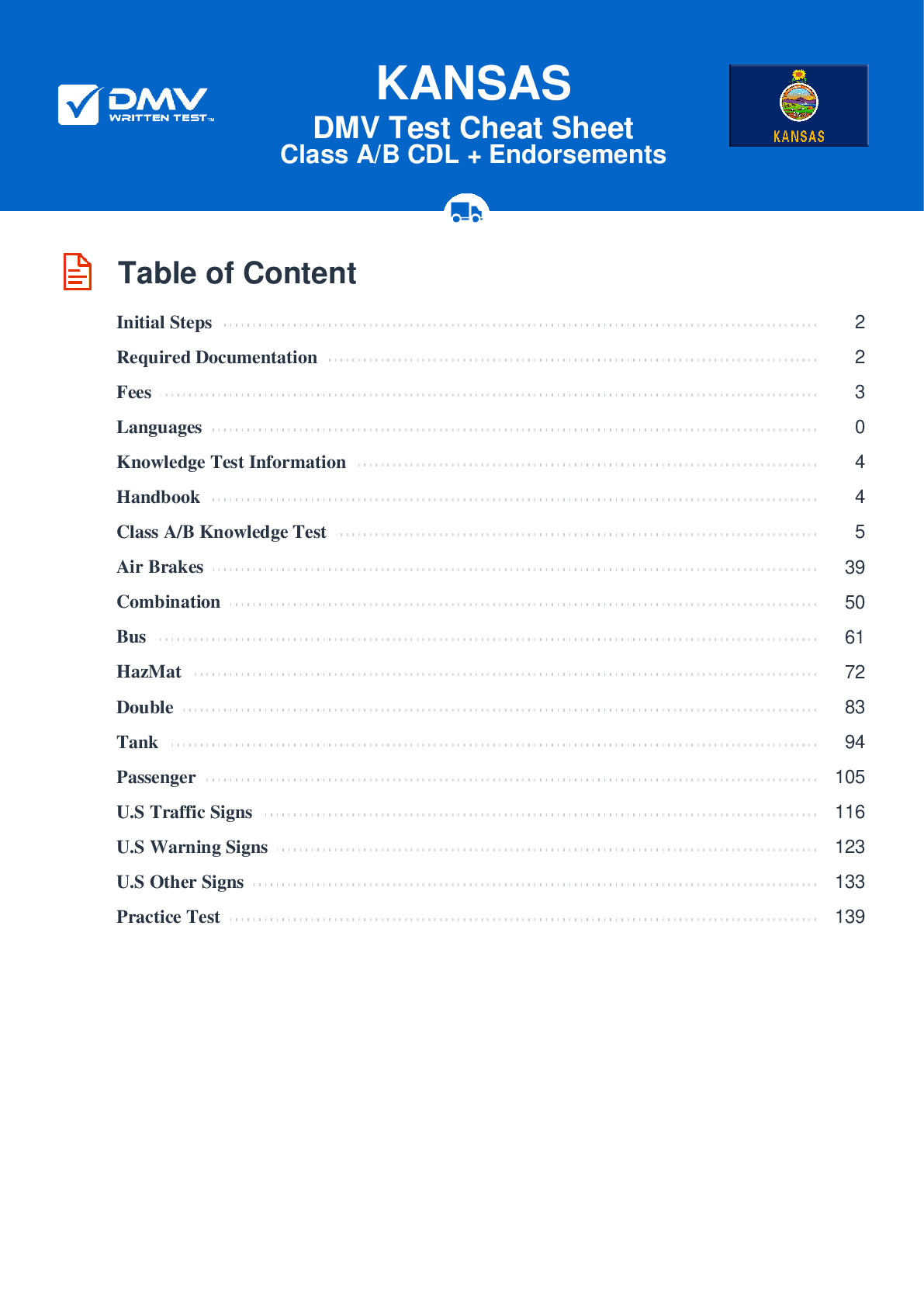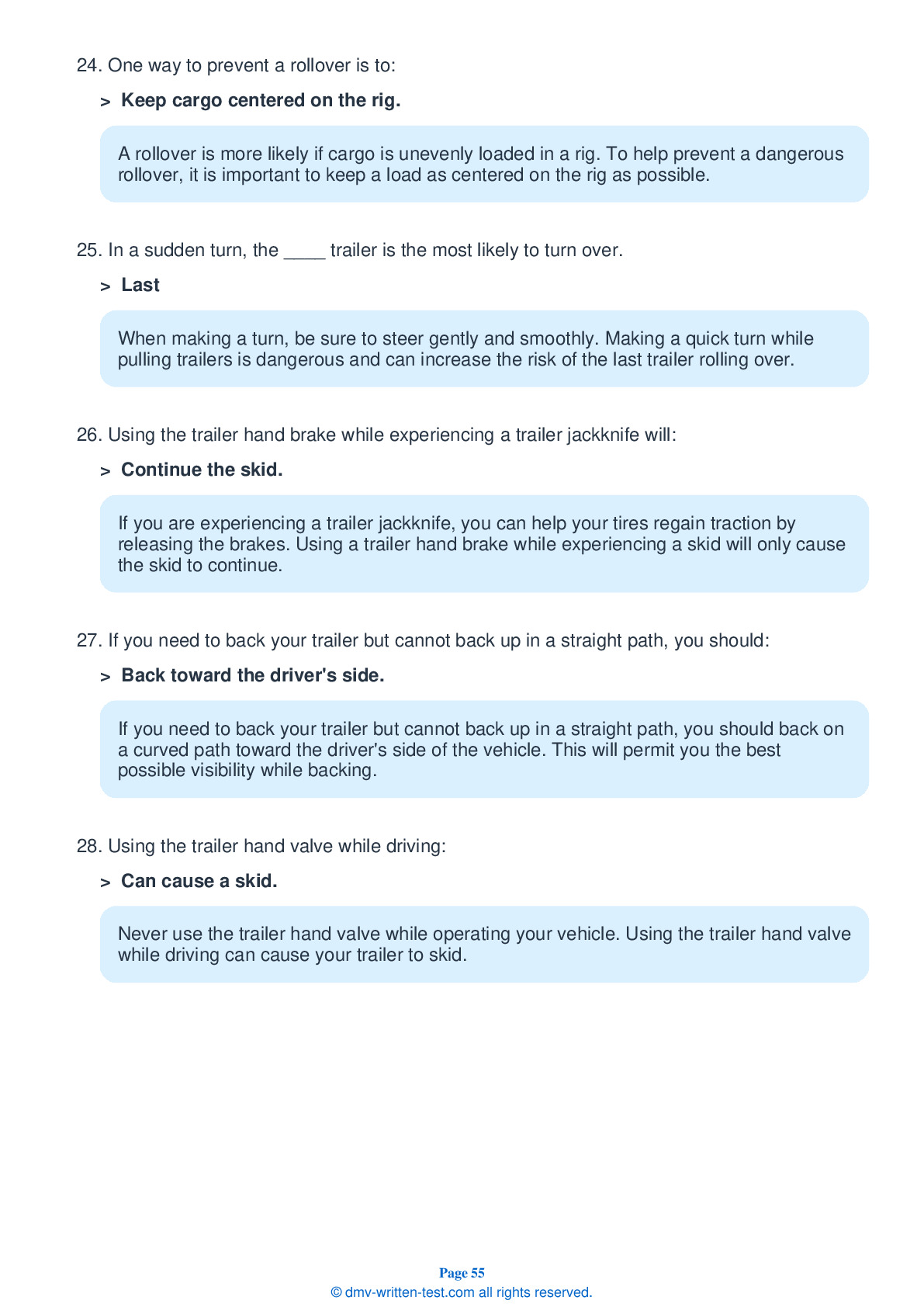Combination
All applicants who are applying for a Class A CDL should be prepared to take the Combination test. This test covers information found in Section 6 of the Kansas Commercial Driver License Manual. Section 6 provides the information needed to safely operate tractor-trailers, doubles, triples, and straight trucks with trailers. The test is made up of 20 multiple-choice questions, and applicants will need to correctly answer a minimum of 16 questions to pass. The Combination test is not a replacement for the Double/Triple endorsement test.
Number of Question
Passing Score
1. When driving a tractor-trailer equipped with ABS, you should:
Explanation
When driving a tractor-trailer combination equipped with an Anti-Lock Braking System (ABS), you should brake in the same manner that you would in a vehicle without ABS.
2. When glad hands are coupled, the seals should be pressed together at an angle of:
Explanation
When coupling, be sure to couple the proper glad hands. When glad hands are connected, the seals should be pressed together at a 90-degree angle.
3. Before backing your tractor under the trailer, make sure your trailer brakes are:
Explanation
Correctly following the steps to couple and uncouple trailers is vital to safely operating a combination vehicle. Before backing your tractor under the trailer while coupling, make sure your trailer brakes are locked.
4. If oil and water build up in your vehicle's air tanks, the brakes:
Explanation
Air tanks should be drained daily to remove water and oil buildup. An excess of oil and water in the air tanks can interfere with proper brake function.
5. Trailers with low underneath clearance may be difficult to drive:
Explanation
Railroad-highway crossings may be difficult to cross when pulling a trailer with a low underneath clearance. In particular, both low-slung units and single-axle tractors pulling long trailers are especially challenging to drive over raised crossings.
6. After coupling, there should be ____ between the upper and lower fifth wheel.
Explanation
Before a trip, be sure to inspect all couplings. There should be no space between the upper and lower fifth wheel.
7. If you need to back your trailer but cannot back up in a straight path, you should:
Explanation




